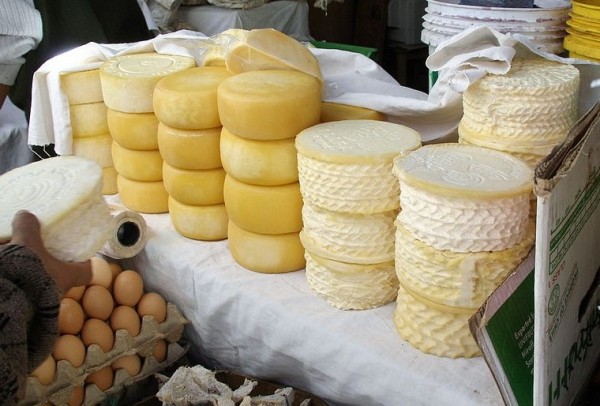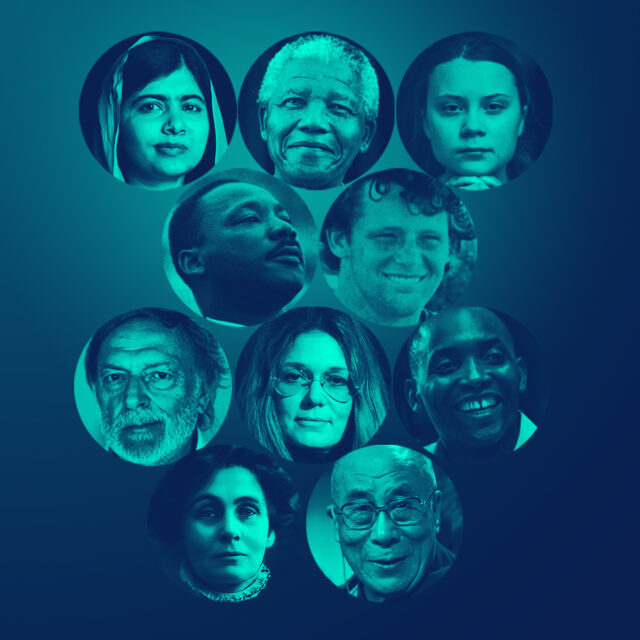The craft of cheese-making has been thriving in one region of the Congo, dubbed the ‘Switzerland of Africa’.
David McNair is an award-winning reporter and editor based in Charlottesville, Va. He runs the hyper-local news site The DTM and his fiction has appeared inVirginia Quarterly Review. A version of this was published on Take Part.
In the lush hills of the eastern Democratic Republic of the Congo, an unusual craft practiced in the Masisi Mountains is thriving despite decades of war: fine cheese-making.
Known in the Congo as the “Switzerland of Africa,” the region is nestled about 25 miles west of the provincial capital of Goma. The nickname originated thanks to hills populated with Swiss Brown and Friesländer cows, which are native to Switzerland but were brought over to Masisi when the region was under colonial Belgian rule from 1908 to 1960. Cheese-making was introduced in the 1970s by Belgian monks, who first made the cheese for themselves. But as their production grew, so did jobs in their cheese factories.
Andre Ndekezi was one of their employees. Taught to make cheese more than 30 years ago through a program with the U.N. Food and Agriculture Organization in Masisi, he went on to work for one of the monks’ cheese factories. Back then, they processed all kinds of cheeses and dairy products, including French Camembert, Italian mozzarella, yogurt, and butter. He made a good living doing so until the late 1990s, when war destroyed the industry in the region and forced him to leave.
“My family and I left Masisi for Goma, and I had to find a different job,” Ndekezi, now 53, told the news organization. “I worked in a hotel. I managed to feed my family, but I didn’t make cheese for 20 years.”
Ndekezi, like many other small dairy farmers, has since returned to the hills of Masisi and now operates a small cheese-making operation. While he has the technical skills, he lacks the equipment and resources to make the kind of dairy products he did in the past. Small farmers like Ndekezi generally produce what is known as Masisi Gouda, a milder, softer-textured version of Dutch Gouda, which is sold across the Congo.
The commodity is not cheap —two kilos of aged Gouda cost over $10, and it’s largely seen as a luxury item. But there is growing demand from large supermarkets and restaurants in nearby Goma and the distant capital of Kinshasa, and foreign demand is on the rise as well.
Local dairy farmer Alex Kasole, 33, represents a new generation of Masisi cheese-makers who want to revitalize the local industry. He has dozens of Swiss Brown and Friesländer cows grazing on his 700-acre farm, brought over by his Swiss wife’s grandfather in the days of Belgian rule.
But violence in the troubled nation also got in the way of Kasole’s plans. Production of his popular Masisi Gouda came to a halt in the spring of 2012 when war broke out on his land between the Congolese army and M23 rebels. Backed by U.N. troops, the Congolese army defeated the rebels in November 2013. While the dangerous rebel group is still active, the Masisi mountains remain relatively peaceful.
“This here is an ideal place to raise cattle,” Kasole told AllAfrica.com, explaining that the climate is cool and cows graze on lush grass.
When they’re not busy eating, his cows produce about 100 gallons of milk per day, allowing him to make up to 1,500 wheels of Gouda per month. Unlike many other small farmers in the hills—who produce their cheese in wooden sheds using old bathtubs, fishnet screens, and metal cooking pots—Kasole’s cheese factory is lined with glazed tiles and more modern equipment, including a sterilized metal tub.
Thanks to his wife’s Swiss roots, he’s traveled to the country and considers the cheese factories there a model for his farm. He’s even adopted the Swiss tradition of adorning his cows with bells, partly as a novelty but mostly as a deterrent to cattle thieves. To make his farm even more productive, he’s in the process of building a small hydroelectric turbine along the river that runs through his pasture so he’ll have an around-the-clock power source.
Eventually, he’d like to build refrigerated storage units so that he can increase production volume and produce other cheeses and dairy products such as Camembert and butter.
Ndekezi is also working to acquire equipment so he can start producing French Camembert. For both men, however, another outbreak of violence could set those ambitions back yet again.
Kasole, however, appears undeterred and bold. As he told AllAfrica.com, if there’s another war, he’ll just use motorcycles to smuggle his Masisi Gouda into Goma.





